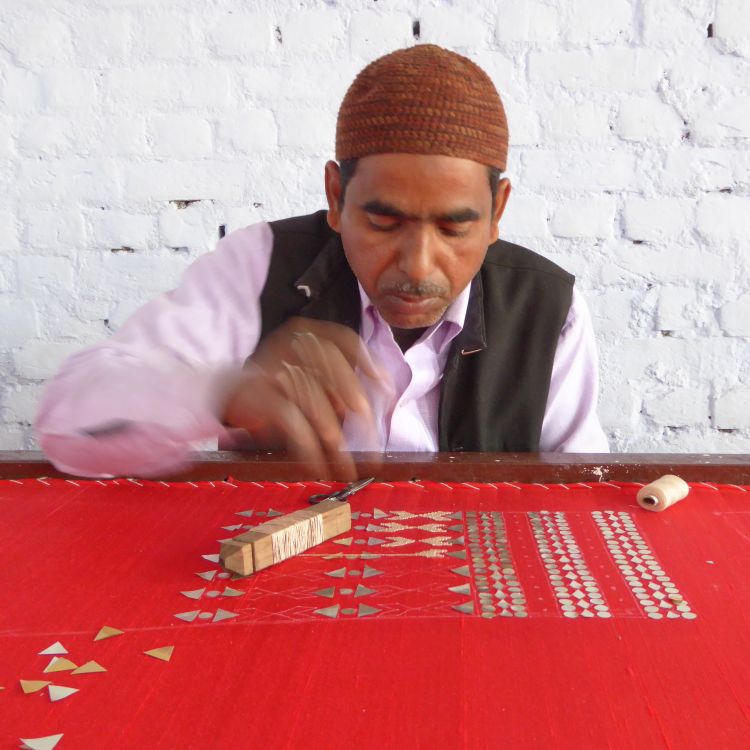So here is one final post from my trip to India last month. I was in pursuit of locations to film hand embroidery in progress and visited a variety of workshops. Many of these also specialised in applying a range of embellishments to fabrics in order to create the highly decorative garments favoured across India.
Decoration and embellishment have always been absolutely central to Indian textile production, particularly for the home market where decoration is widely considered auspicious. The V&A collection includes a variety of highly embellished fabrics and garments some of which we plan to include in the exhibition. My favourite is this border decorated with beetle wings – it is simultaneously beautiful and slightly disturbing.
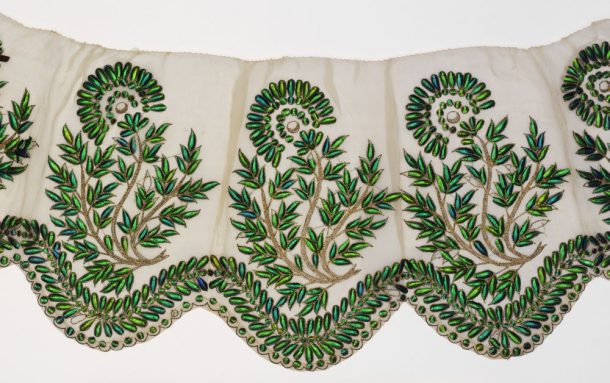
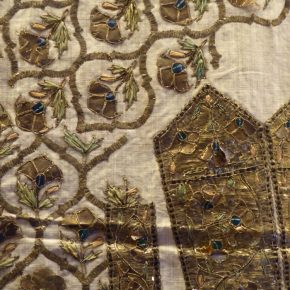
Different techniques of embellishment have been perfected in different areas across India and have in turn have helped define regional identity as expressed through costume and dress. Rajasthan is particularly famous for the use of bright coloured fabrics which are then further embellished by the addition of all sorts of shiny and sparkly things.
Traditional to Rajasthan is a technique called Gota work which involves stitching on shapes cut from silver and gold ribbon. These are surrounded by further stitching to create a detailed pattern. In the finest examples of the work, such as the piece shown to the left from the fabulous textiles collection at the City Palace Jaipur, the ribbon is made from real gold and silver.

There aren’t many people who can afford to have their garments decorated with real gold and silver. However I visited one of the few remaining workshops in the heart of Jaipur’s old city that decorates a variety of garments using real gold thread and ribbon. We will be featuring their incredibly fine embroidery in one of the films we are making for the exhibition. Real metal ribbon has sufficient rigidity to stay in place when crinkled allowing them to add a three dimensional aspect to the design not possible with modern plastic based ribbons.
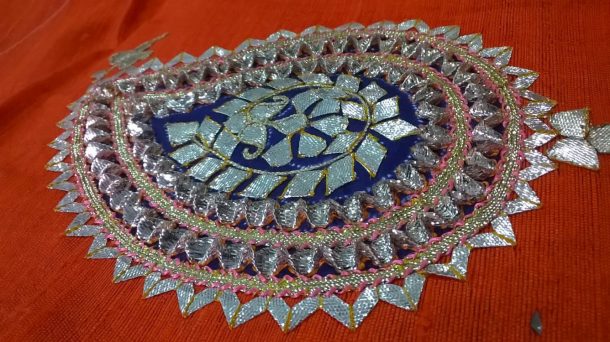

I then spent an afternoon in Sanganeer, just outside Jaipur, visiting Meharban Khan who has a small embroidery workshop on the roof of his house. Meharban works on batch orders sent from local factories making clothes for the middle to lower end of the market. He uses more economical materials and works very quickly in order to keep the price of the end product low.
Fabric is stretched onto frames to keep it taut and easy to sew. The design, supplied by the factory, is then transferred onto fabric using chalk paste smudged through a design pricked in tracing paper. A silver or cold coloured ribbon is backed with tape in order to prevent it fraying and cut into shapes which are held in place on the fabric using a tiny dot of glue. Meharban and his co-workers then finishes the design with lines of stitching and couching.
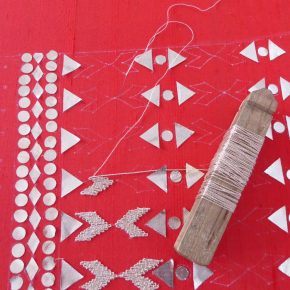

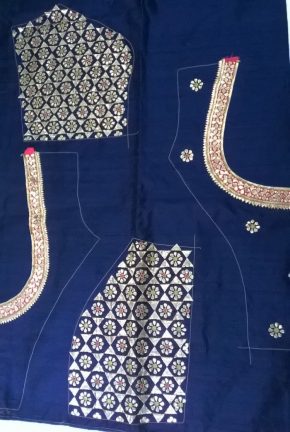
In order not to waste work and valuable materials, the embellishment is only applied to exactly the area required before the garment is made up. This creates rather wonderful pieces of fabric in which you can see the outline of the garment pieces starting to emerge.

Whilst these workshops usually employ men, a lot of needlework and embroidery was, and still is, done at home by women. On my way out of Kaladera a few days previously I caught this image of a woman sat outside her house in the evening light stitching a quilt.

